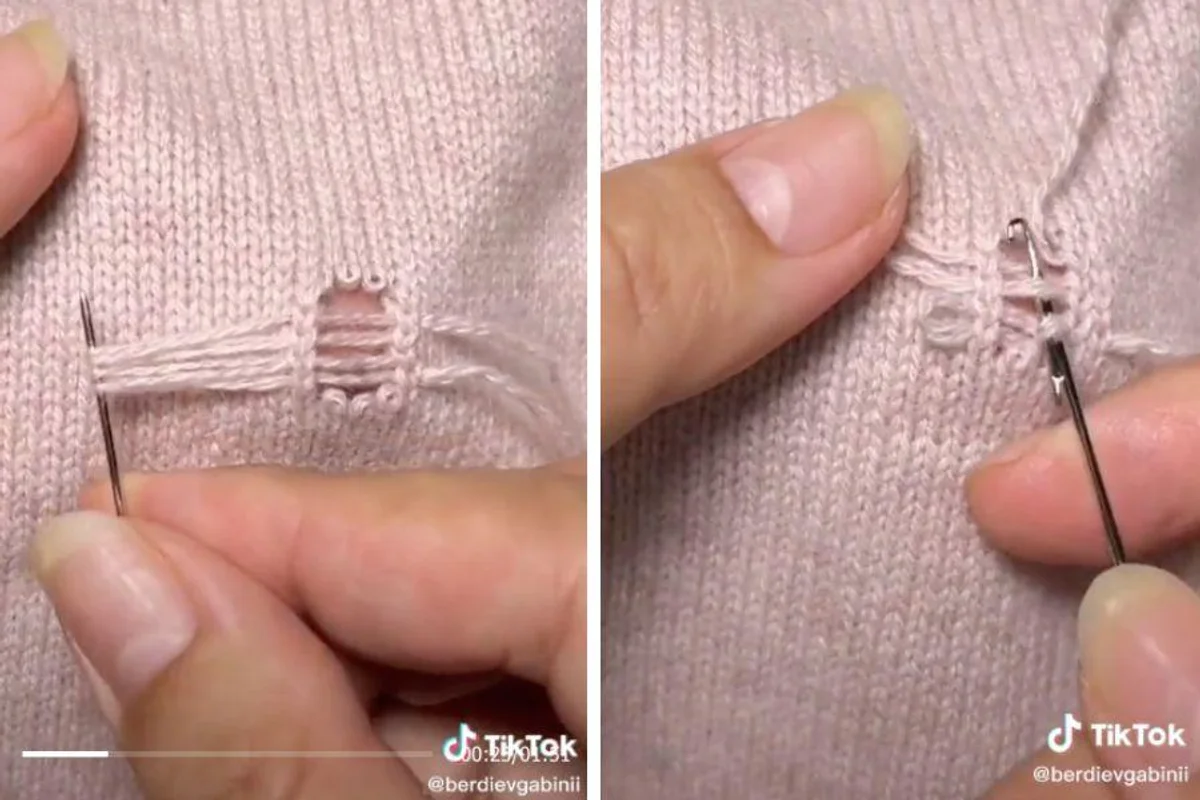Invisible Mending Service: The Art of Flawless Garment Repair

In a world where disposable fashion dominates, there’s a growing appreciation for preserving quality garments, especially those with sentimental or financial value. Whether it’s a cherished heirloom, an expensive suit, or a delicate silk blouse, when these items get damaged, the instinct might be to retire them for good. However, with the expertise of an invisible mending service, you can restore your favorite garments to their former glory.
This comprehensive guide explores the intricacies of invisible mending, its benefits, the process, and how it ensures your clothing looks as good as new without any visible signs of repair.
What Is Invisible Mending?
Invisible mending is a specialized textile repair technique that seamlessly fixes holes, tears, or other damage in garments. Unlike traditional patching or sewing, which often leaves noticeable marks, invisible mending aims to restore the fabric’s original appearance.
The process involves reweaving the damaged area with threads from the same fabric, ensuring a perfect color and texture match. It’s so precise that even a close inspection may not reveal where the repair was made. This technique is especially popular for repairing high-quality fabrics such as wool, cashmere, silk, and tailored garments like suits and coats.
Key Benefits of Invisible Mending
Invisible mending services offer a range of benefits, making them an excellent choice for garment repair. Here’s why this method stands out:
1. Seamless Repairs
The hallmark of invisible mending is its ability to restore garments without leaving any visible trace of repair. This is crucial for high-end clothing where appearance and integrity are paramount.
2. Preserves Sentimental Value
Clothing often carries memories—a wedding dress, a favorite sweater, or a jacket passed down from a loved one. Invisible mending allows you to preserve these sentimental items for future use.
3. Sustainable Fashion
In an era where sustainability is key, repairing clothing instead of discarding it reduces waste and promotes eco-friendly practices. Invisible mending extends the life of your garments, reducing the need for replacements.
4. Cost-Effective Solution
Replacing high-quality or custom-made garments can be expensive. Invisible mending is a cost-effective alternative that restores your clothing at a fraction of the replacement cost.
5. Restores Original Aesthetic
Unlike visible mending, which can alter the look of a garment, invisible mending restores the original aesthetic, ensuring your clothing remains elegant and wearable.
How Invisible Mending Works: Step-by-Step
Invisible mending is an intricate process that requires precision, expertise, and patience. Here’s a step-by-step overview of how professionals perform this delicate task:
1. Damage Assessment
The first step is to assess the type and extent of damage. The professional evaluates the fabric, identifies the weave or knit pattern, and determines the most suitable repair technique.
2. Thread Extraction
To ensure a perfect match, threads are carefully extracted from hidden parts of the garment, such as inside seams or hems. These threads are used for the mending process.
3. Fabric Preparation
The damaged area is cleaned and stabilized to prevent further fraying. Proper preparation ensures a clean and durable repair.
4. Reweaving the Fabric
Using specialized tools, the extracted threads are meticulously woven into the damaged area to replicate the original fabric’s weave or knit. This process involves threading individual fibers into place, matching the original pattern and texture.
5. Final Inspection and Finishing
Once the repair is complete, the garment is inspected to ensure the repair is truly invisible. The fabric is then pressed or steamed to blend the mended area seamlessly with the rest of the garment.
Common Fabrics for Invisible Mending
Invisible mending is suitable for various fabrics, but some materials are particularly well-suited for this technique due to their texture and weave. These include:
- Wool: Perfect for suits, coats, and trousers due to its dense weave.
- Cashmere: Soft and luxurious, cashmere requires delicate handling during the mending process.
- Silk: Challenging but rewarding, silk repairs demand precision to maintain the fabric’s delicate nature.
- Cotton: Common in shirts and lightweight garments, cotton can be invisibly mended with careful attention to detail.
- Linen: Known for its loose weave, linen requires special expertise to ensure the repair blends seamlessly.
Invisible Mending vs. Other Repair Methods
Invisible mending stands out from other garment repair techniques due to its precision and quality. Here’s how it compares:
| Repair Method | Description | Advantages | Drawbacks |
|---|---|---|---|
| Invisible Mending | Seamlessly reweaves fabric to match the original. | Invisible repairs, restores original look. | Time-intensive and requires expertise. |
| Visible Mending | Repairs are made visible as a design feature. | Creative and trendy, promotes sustainability. | Alters original design, not suitable for formal wear. |
| Patching | Adds a patch over the damaged area. | Quick and easy, strengthens fabric. | Highly visible, not ideal for luxury fabrics. |
| Sewing | Repairs tears with stitches. | Cost-effective and fast. | Stitches are visible, may not match fabric. |
How to Choose an Invisible Mending Service
Selecting the right invisible mending service is crucial to ensure your garments are repaired to the highest standard. Here’s what to look for:
1. Experience and Expertise
Look for a service with experienced professionals who specialize in invisible mending. Their expertise is essential for handling complex repairs and delicate fabrics.
2. Customer Reviews and Testimonials
Check online reviews or ask for recommendations to find a reputable service. Satisfied customers are a good indicator of quality work.
3. Portfolio of Work
Reputable services often showcase their work. Reviewing before-and-after photos can give you confidence in their capabilities.
4. Turnaround Time
Some garments may require urgent repairs. Choose a service that provides realistic timelines without compromising quality.
5. Specialization in Fabrics
If your garment is made from a specific fabric, such as cashmere or silk, ensure the service has experience with that material.
Invisible Mending: A Sustainable Fashion Choice
In addition to restoring your garments, invisible mending supports sustainable fashion practices. By repairing and reusing clothing, you reduce waste and minimize the environmental impact of the fashion industry. Invisible mending aligns with the growing global movement toward conscious consumption and waste reduction.
Caring for Invisibly Mended Garments
After your garment has been repaired, proper care is essential to maintain its longevity and appearance. Follow these tips:
- Store Properly: Use breathable garment bags to protect your clothes from moths and other pests.
- Follow Care Instructions: Always adhere to the garment’s washing and cleaning recommendations.
- Handle with Care: Avoid stress on the repaired area, such as pulling or stretching.
- Rotate Use: Regularly alternate your wardrobe to reduce wear on any single piece.
- Schedule Maintenance: Periodically inspect garments for new damage to address issues early.
Why Invisible Mending Is Worth the Investment
Invisible mending is more than just a repair technique—it’s an art form that combines skill, patience, and craftsmanship. By choosing invisible mending, you can:
- Save money by avoiding the cost of replacement.
- Preserve garments that hold sentimental or financial value.
- Contribute to sustainable fashion by reducing waste.
Whether it’s a moth-eaten cashmere sweater, a torn silk blouse, or a damaged suit, invisible mending can breathe new life into your wardrobe. With professional expertise, your favorite garments can continue to make a statement without any visible signs of repair.
So, the next time your treasured clothing suffers damage, don’t despair. Reach out to a trusted invisible mending service and let them restore your garments to their original elegance—because great fashion deserves a second chance.


Leave a Comment